6 Ways The Construction Industry Can Benefit From Workforce Management Software
-
Kumar Abhishek Anand
- October 10, 2023

The construction industry faces several challenges when it comes to managing its workforce. From scheduling and tracking employee hours to ensuring compliance with safety regulations, construction companies often struggle to streamline their workforce management processes. In this blog, we will explore how workforce management software can address these challenges and provide numerous benefits to the construction industry.
Table of Contents
ToggleWhat is Workforce Management?
Workforce management refers to the process of effectively managing an organization’s workforce to optimize productivity and ensure efficient operations. Traditionally, workforce management involved manual processes such as paper-based timesheets and manual scheduling. However, with advancements in technology, construction companies now have access to digital workforce management systems that automate and streamline these processes.
Workforce management encompasses various roles and responsibilities, including:
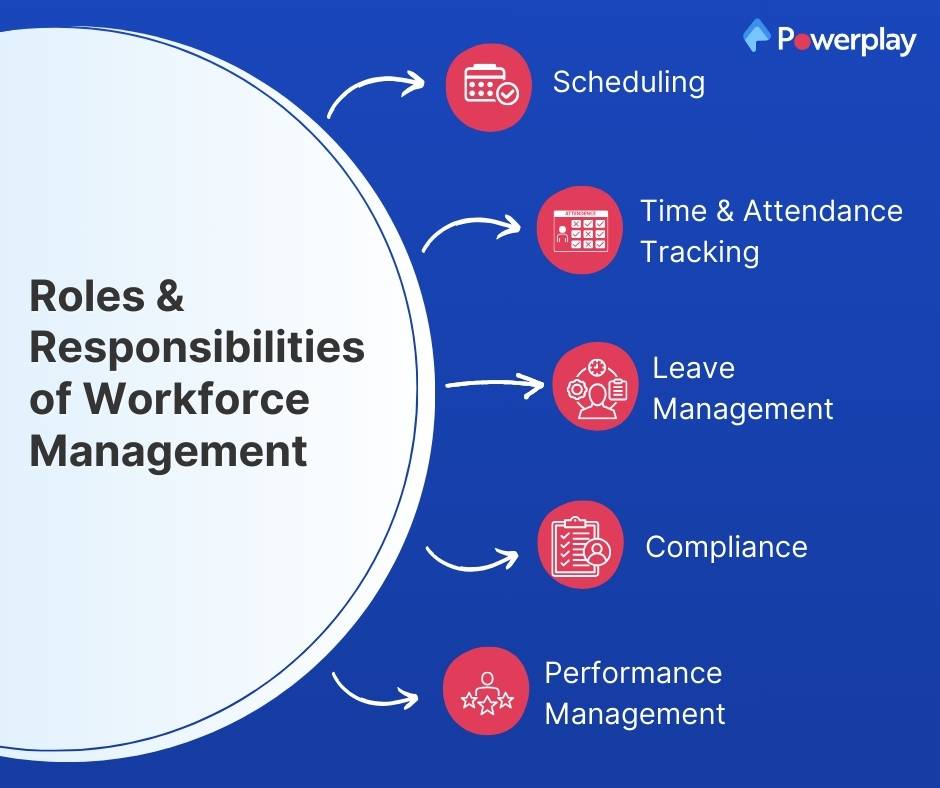
a. Scheduling: Assigning employees to specific tasks and projects based on their skills and availability.
b. Time and Attendance Tracking: Recording employee work hours accurately to ensure fair compensation.
c. Leave Management: Managing employee vacation requests, sick leaves, and other time-off requests.
d. Compliance: Ensuring compliance with labor laws, safety regulations, and industry standards.
e. Performance Management: Evaluating employee performance and providing feedback for improvement.
Workforce Management Issues in the Construction Industry
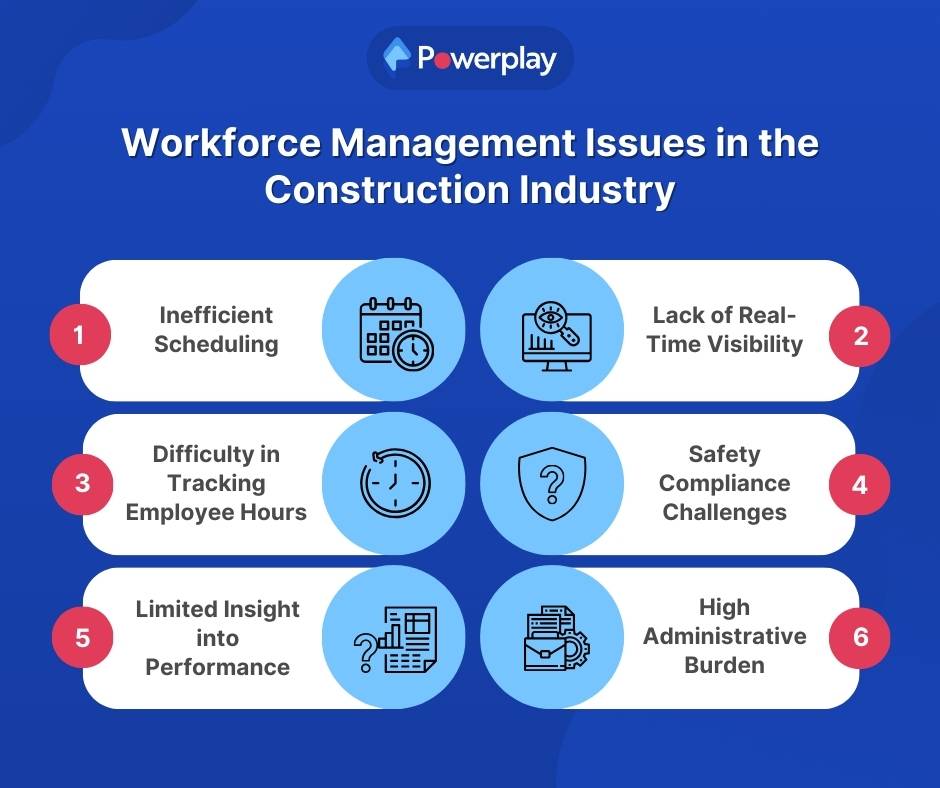
The construction industry faces several unique challenges when it comes to managing its workforce. Here are some common problems:
Issue 1. Inefficient Scheduling: Manual scheduling processes can be time-consuming and prone to errors. Construction companies often struggle to assign the right employees to the right projects at the right time.
Issue 2. Lack of Real-Time Visibility: Without proper workforce management tools, construction companies may lack real-time visibility into their workforce’s activities. This can lead to delays, miscommunication, and reduced productivity.
Issue 3. Difficulty in Tracking Employee Hours: Accurately tracking employee work hours is crucial for fair compensation and compliance with labor laws. However, manual timesheets can be easily manipulated or lost, leading to inaccuracies.
Issue 4. Safety Compliance Challenges: The construction industry is subject to strict safety regulations. Ensuring compliance with these regulations can be challenging without proper systems in place.
Issue 5. Limited Insight into Performance: Without a centralized system for performance tracking, construction companies may struggle to evaluate employee performance objectively.
Issue 6. High Administrative Burden: Manual workforce management processes require significant administrative effort, including paperwork, data entry, and coordination among various stakeholders.
Solving Workforce Management Problems with Software
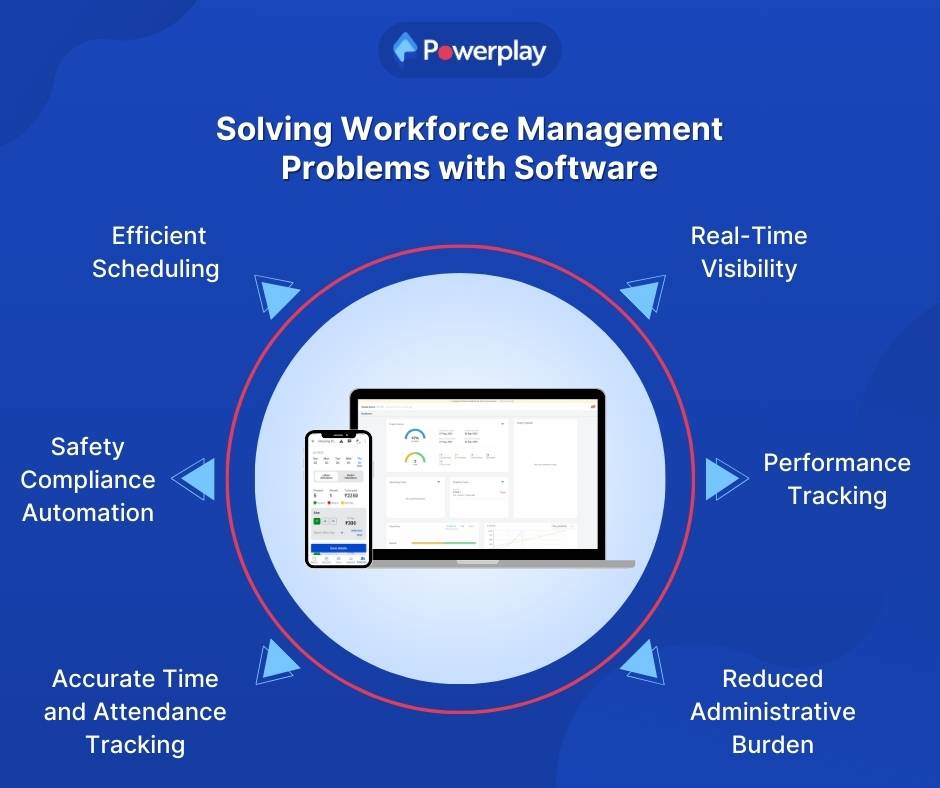
Construction/workforce management software offers several solutions to address the challenges mentioned above:
1. Efficient Scheduling: Workforce management software automates the scheduling process by considering factors such as employee availability, skills, and project requirements. This ensures optimal resource allocation and reduces scheduling conflicts.
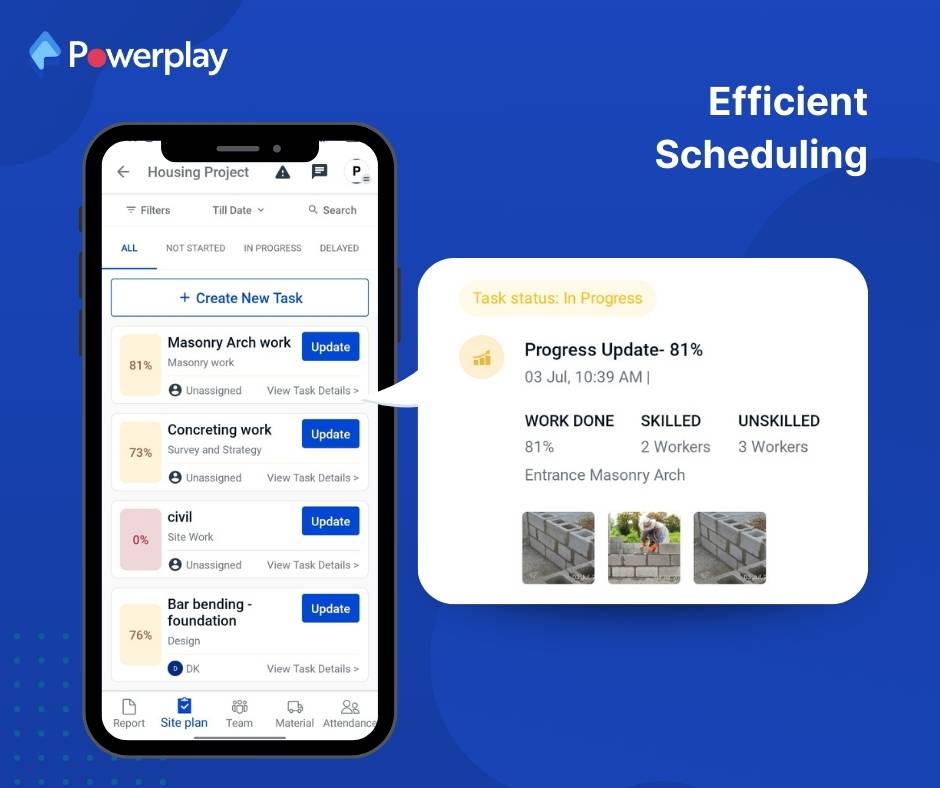
2. Real-Time Visibility: Digital workforce management systems provide real-time visibility into employee activities through features like GPS tracking and mobile apps. This enables better coordination, communication, and decision-making.

3. Accurate Time and Attendance Tracking: Workforce management software replaces manual timesheets with digital time-tracking tools that record work hours accurately. This eliminates errors caused by manual data entry or manipulation.
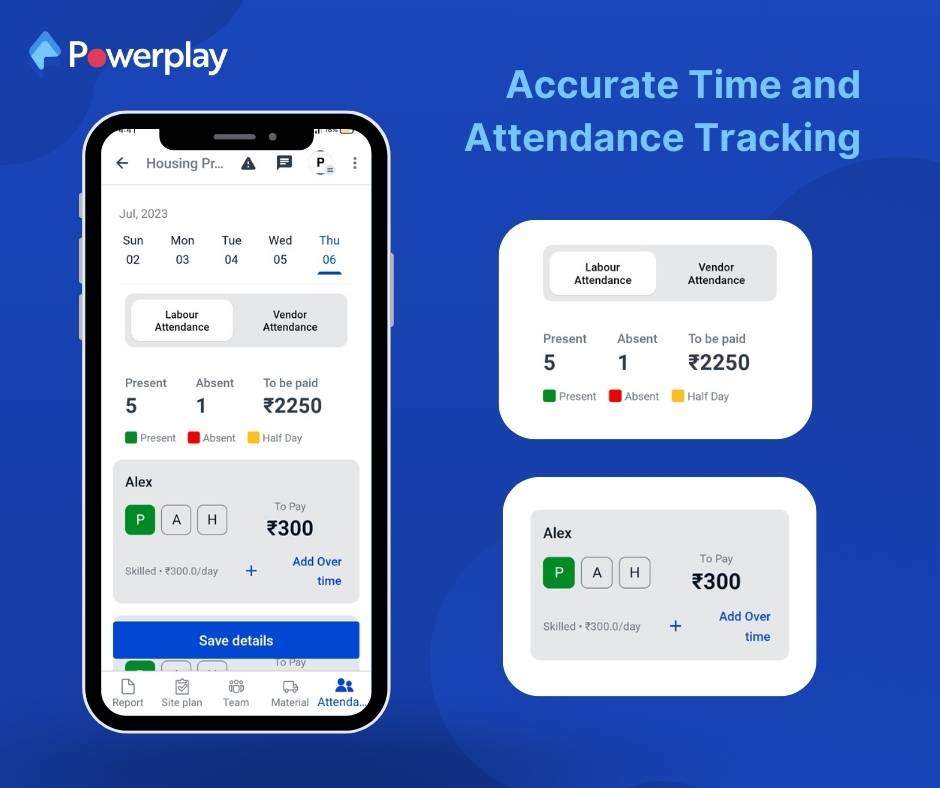
4. Safety Compliance Automation: Construction/workforce management software includes features for managing safety compliance requirements. It helps track safety training completion, monitor adherence to safety protocols, and generate compliance reports.
5. Performance Tracking: Digital workforce management systems allow construction companies to set performance goals, track progress, and provide feedback in a centralized manner. This promotes transparency and accountability.
6. Reduced Administrative Burden: By automating various administrative tasks such as data entry, reporting, and communication, workforce management software reduces the administrative burden on construction companies. This frees up time for more strategic activities.
Conclusion
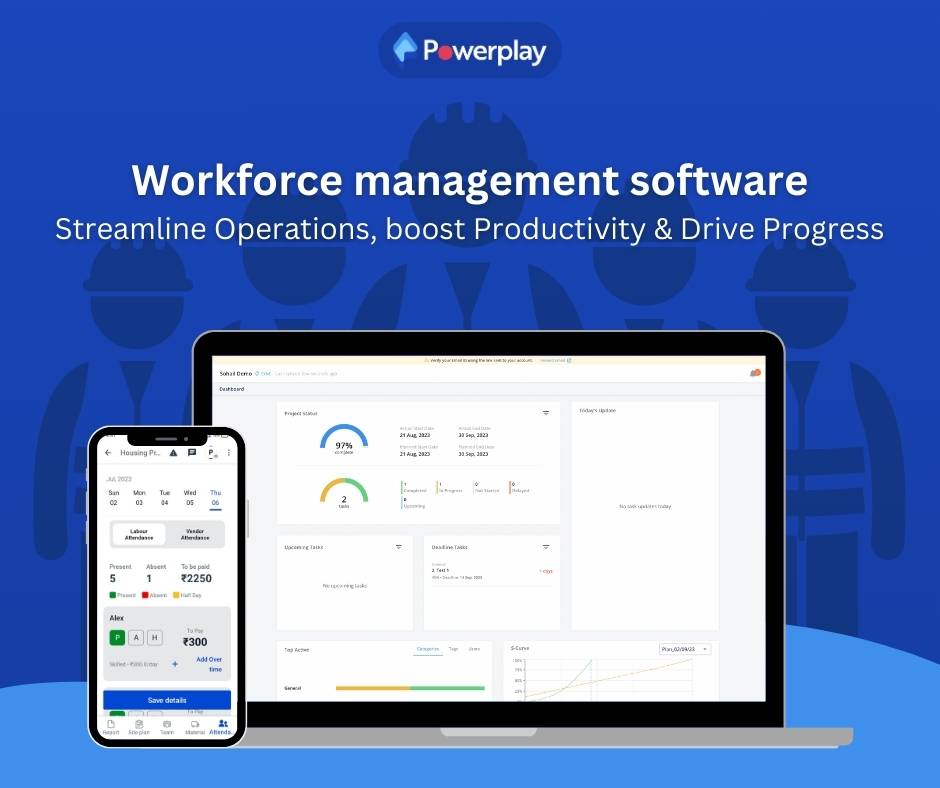
In conclusion, the construction industry can greatly benefit from adopting workforce management software. By addressing common workforce management problems such as inefficient scheduling, lack of real-time visibility, difficulty in tracking employee hours, safety compliance challenges, limited insight into performance, and high administrative burden, construction companies can streamline their operations and improve overall productivity.
Now is the time for the construction industry to embrace automation not only in workforce management but also in supply chain management and overall progress management. With digital solutions like workforce management software becoming more accessible and user-friendly, construction companies have an opportunity to enhance efficiency, reduce costs, and stay competitive in an evolving market.
Remember: The future of construction is digital!
Share
Kumar is a digital content professional with more than 2 years of experience in Blog writing, copywriting and scripting. His passion lies in the art of creating convincing content that plays a major role in converting leads for SAAS businesses.












